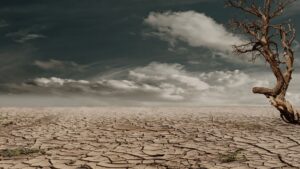In yet another sign of escalating climate volatility, the United Kingdom is experiencing its driest spring in more than 100 years. The Met Office has confirmed that this spring’s average rainfall stands at just 80 mm far below the usual seasonal average of 229 mm marking the country’s lowest precipitation for the season in over a century.
 Rainfall Plummets to Historic Lows
Rainfall Plummets to Historic Lows
The dry spell gripping Britain has seen vast areas of the country go without meaningful rain for extended periods. Notably, regions including Greater London, Hampshire, Greater Manchester, Lancashire, and Yorkshire have recorded 20 consecutive dry days. While some parts of Wales and southwest England received adequate rainfall earlier in March, most of the UK has seen sharp deficits since then.
For comparison, spring 2022 when a drought was officially declared saw 78% of normal rainfall. This year, the country has received just 35% so far.
Persistent Dry Conditions Raise Drought Concerns
According to the Environment Agency and the National Drought Group, the largely dry weather is forecast to continue for at least another week, raising fears about the onset of a summer drought. Although reservoir levels currently remain stable at around 80% capacity, officials warn that continued lack of rainfall could tip the balance.
In response, water suppliers have been urged to strengthen drought resilience and plan ahead. While no immediate hosepipe bans are in place, authorities warn that such restrictions could be reintroduced if the dryness persists into the summer months.
Sunshine Intensifies Soil and Surface Drying
Amplifying the effects of low rainfall is an unusually high level of sunshine. April was the UK’s sunniest April on record, preceded by the third sunniest March. May’s sunshine totals are also running above average. This consistent bright, dry weather has exacerbated soil drying and increased water evaporation from land surfaces and vegetation.
Although sunny skies bring temporary comfort to many, they also accelerate environmental stress and further reduce groundwater recharge worsening drought vulnerability in coming months.
Lessons from 2022 Drought Still Fresh
The current conditions are drawing comparisons to the summer of 2022, when the UK faced its last official drought. That year, nearly 19 million people were affected by hosepipe bans. Reservoirs then were at 90% capacity in spring higher than today’s levels highlighting the growing urgency around water conservation efforts.
With this year’s spring already registering less rainfall than during the 2022 drought period, authorities are taking proactive steps to monitor water reserves and maintain supply stability.
Climate Signals Grow Louder
This year’s extreme dryness is yet another marker in a growing global trend of weather extremes fueled by climate change. Around the world, headlines increasingly carry superlatives hottest, warmest, wettest, driest underscoring how quickly established weather norms are shifting.
For Britain, the current dry spell is not just a seasonal anomaly but a part of a broader pattern of changing climate behavior, with consequences that may stretch well into the summer and beyond.
